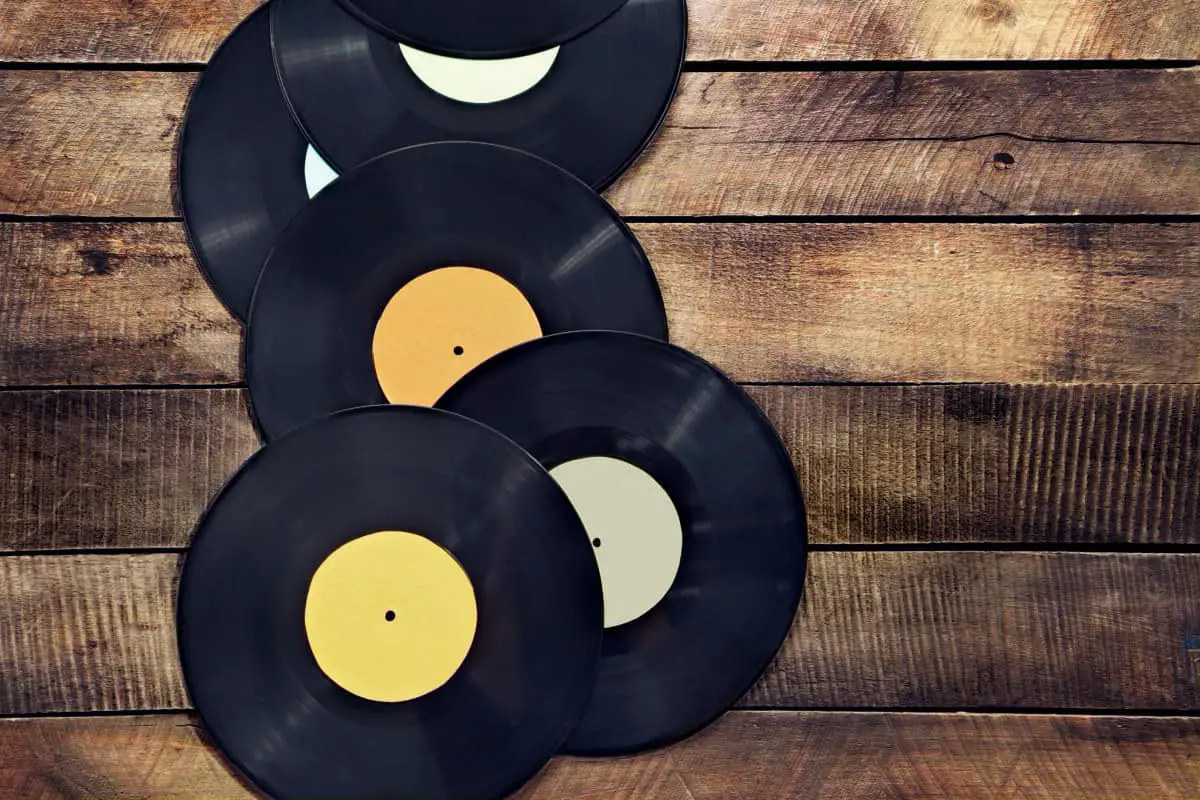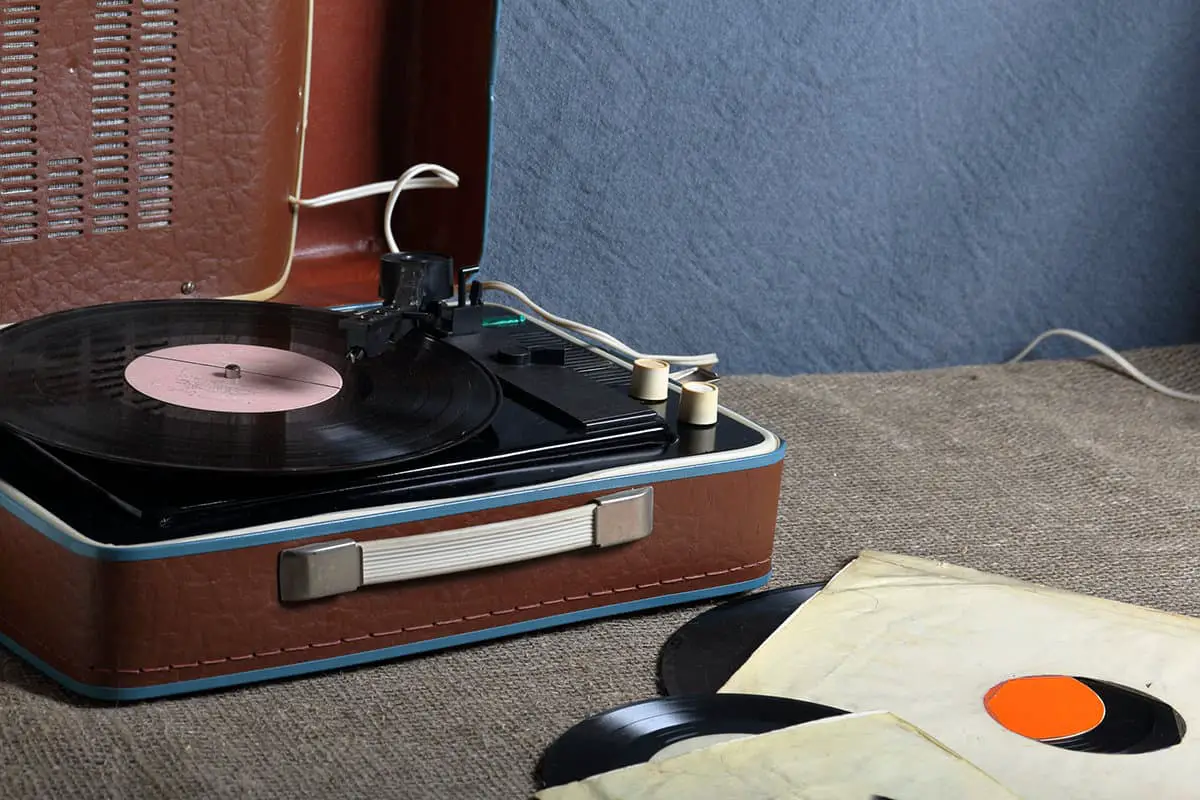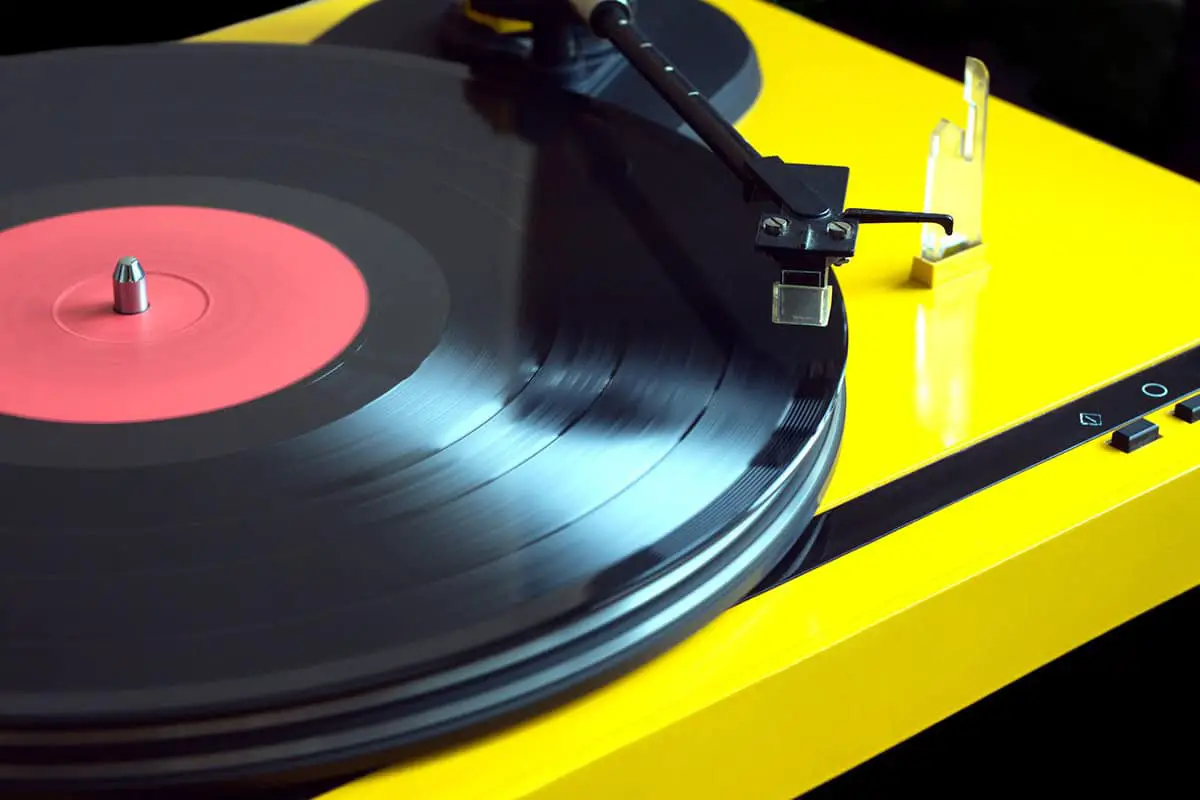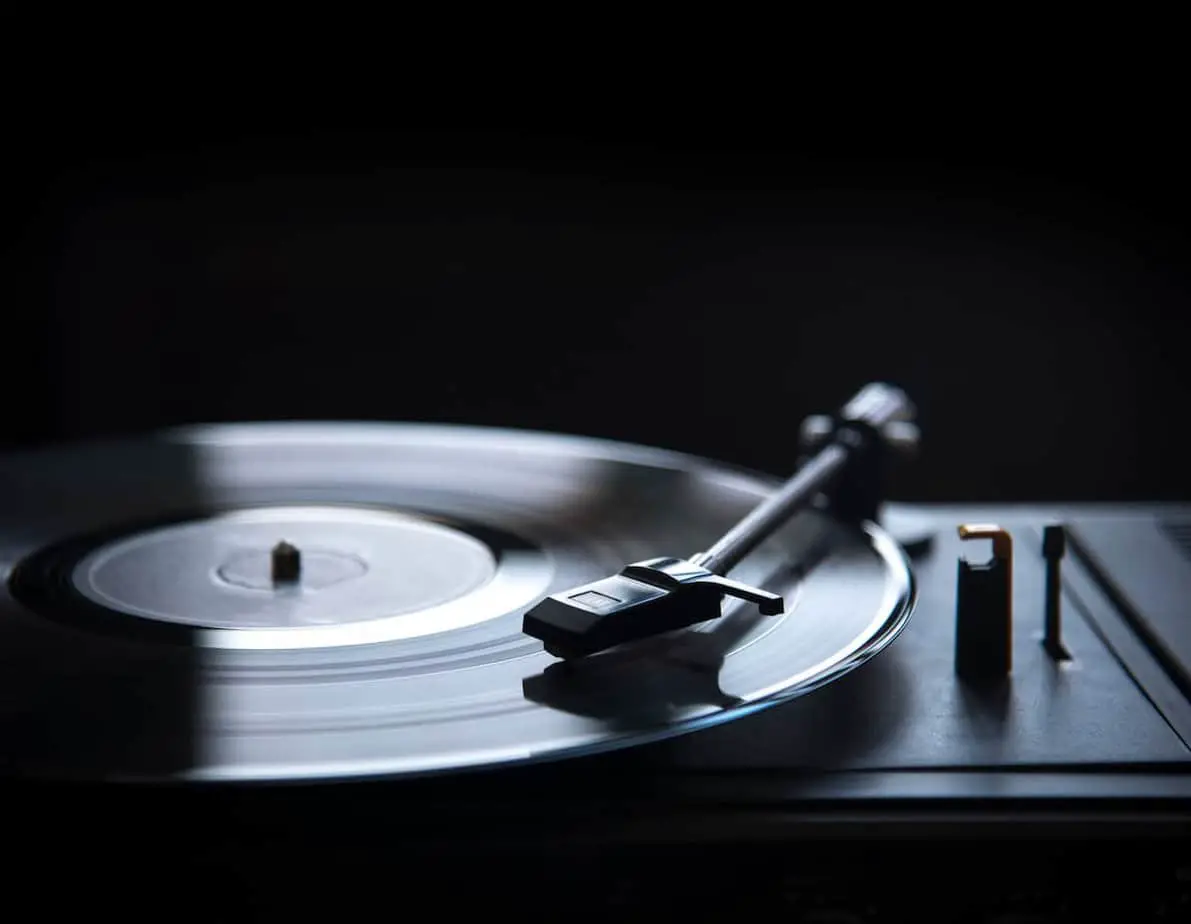This post contains affiliate links.
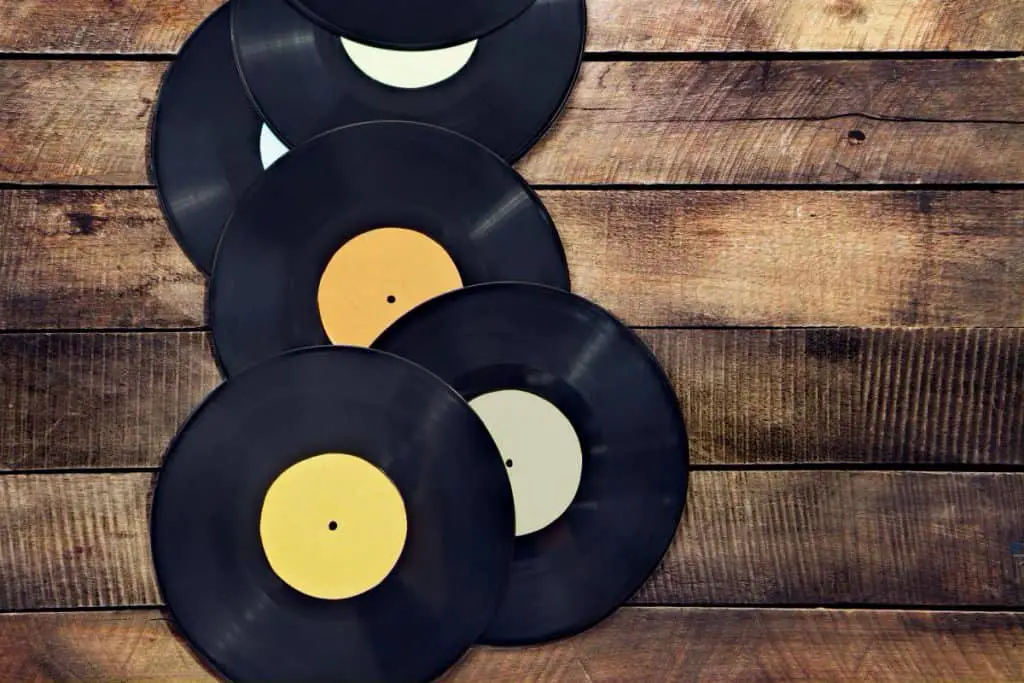
Vinyl records have been around for a while, and they are still a wonderful and high-quality way to listen to music. They are classy and retro, and are most definitely coming back into style. Vinyl record player sales are certainly going up. But before you go get yourself a record player, here are 8 things you definitely need to know. Maybe a turntable would actually be a better fit for you!
Table of Contents
Difference Between a Record Player and a Turntable
Technically record players and turntables are two different things. A record player is a machine that reads records and turns the vibrations into music. Typically, they contain all that you need to play your records, including speakers. A turntable is part of a record player. It’s the part that spins the record and uses the stylus to read the grooves etched into the vinyl.
You can either buy the whole record player or customize your own with a turntable and other additions. However, the words turntable and record player are used interchangeably a lot because they are so similar. It’s important to recognize their differences before you buy one or the other though.
Necessary Additions to a Turntable
Most record players don’t need any add ons, but some require additional speakers. However, if you get just a turntable, you will definitely need some other components before you can start listening to your records. The turntable reads the record and turns it into vibrations, but it still needs other equipment to turn those vibrations into glorious music. Some other add-ons you need for your turntable are a preamp, an amplifier, and speakers.
The preamp helps boost the signal from the turntable so it can be received by the amplifier. Some turntables have preamps already built into them. But if your turntable doesn’t have a built-in preamp, you will need to purchase a separate one.
Like the preamp, the amplifier helps strengthen the signal even more so that the speaker can use it. Without this, the signal will be too weak. Luckily, some speakers have amplifiers built into their system.
And finally, you need speakers. Speakers are essential because without them it would just be electrical signals, not music. There are many different styles and shapes of speakers. There are stereo speakers or floorstanding speakers. Some record players even come with Bluetooth capabilities and can be used to play with any Bluetooth speaker.
So if you buy a turntable with a built-in preamp and a speaker with a built-in amplifier, then that will be everything that you need.
Manual vs Automatic vs Semi-automatic
There are three different types of record players. There are manual, automatic, and semi-automatic. The big difference between these relates to the tonearm. The tonearm is the mobile part of a record player that holds the needle or stylus that picks up the grooves in the record. For all record players, the tonearm needs to be moved so that the stylus rests on the vinyl record. Once the song is over, the tonearm needs to be moved off of the record. The difference between manual, automatic, and semi-automatic record players is how this tonearm is moved.
Manual
Manual record players are record players where you have to place and remove the tonearm from the record to start and stop the music.
Automatic
On the other hand, automatic record players will place the tonearm at the push of a button and automatically remove it once the song is done. This makes the record player a lot easier to use.
Semi-automatic
Finally, Semi-automatic are record players that you have to manually place the tonearm on the record, but it will automatically remove the tonearm once the record is finished. You just have to get it started and the machine will do the rest.
The biggest reason to consider one style over another is that placing the tonearm on the record incorrectly can hurt a record. If you don’t put the tonearm on correctly then the stylus might scratch the record, permanently damaging or destroying the item. Also, placing the tonearm wrong can make a terrible screeching sound, which totally ruins the effect of a soothing song.
In addition, a manual record player will keep going after the song finishes. If you don’t remember to take the tonearm off, it will keep playing, which could cause problems down the road.
Overall, deciding which style you should get all depends on your personal preference and how confident you are in using your record player.
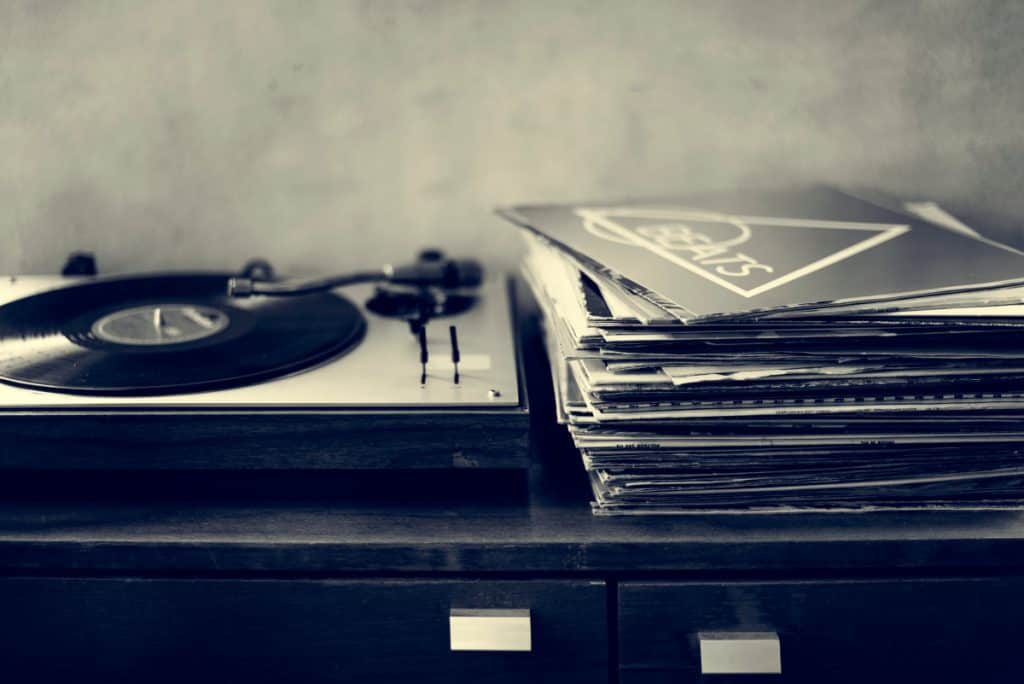
Storage of Your Record Player
Some record players are very portable, specifically suitcase styles ones. But others need a permanent home. Style is important, but there are a lot of other factors that should go into where you put your record player.
The first thing to do when finding a good place to put your record player is safety and stability. Because they can be so expensive, you never want to put a record player in a place where it could be bumped or knocked off its resting place. Record players need to be placed on a stable and heavy surface. If the player causes the table or shelf it sits on to vibrate, it can mess up the record player and cause it to skip or cause tracking issues. One way to help mitigate this is the use of isolation platforms, feet, or pads. These add-ons will help reduce the vibrations that affect your record player.
The next thing to consider is whether the player will be level or not. Record players and turntables should always be placed on flat surfaces. Make sure you test to see if the surface you picked out is uneven or not. If the surface isn’t level then it could cause unnecessary wear and tear on your equipment.
Finally, you need to figure out where to place your speakers. Because sound is composed of vibrations, speakers cause a lot of vibrations. Placing your speakers too close to or even on the same surface as the record player can cause problems. Like placing it on an unsteady surface, extra vibrations can cause the record player to have tracking problems.
A good way to prevent this is to put speakers on a different surface, like a separate shelf. Another option is floorstanding speakers, which are speakers that just sit on the floor. Also, there are speaker isolation pads that will reduce vibrations caused by the speaker.
A lot of this depends on your available space and how you want your setup to look. But these factors are crucial for the safety of the player and the quality of the sound. You need to keep these things in mind as you plan where to put your record player.
Price
You can buy a turntable for a fairly cheap price, but a cheap one can hurt your records. Not all record players and turntables are made equal. You get what you pay for, and sometimes it’s best to pay a little more.
A starter turntable usually costs between $100 to $400. A high-quality model turntable will cost closer to $400 and $700. (Source) Keep in mind that turntables also require additional parts, like speakers, which will increase the overall price.
On the other hand, record players can cost from $50-$300. Again, there is a strong correlation between price and quality. The lower the cost, the more likely it is to both hurt your records and to fall apart before its time.
Which Brand is Best?
There are so many different styles and brands of record players that are available to buy. Some of the best brands to buy record players and Turntables from include Pro-Ject, Fluance, and Audio-Technica. Each of these brands has its own different benefits. Audio-Technica is the most affordable of the three. Fluance and Pro-Ject are a little more pricey, but they are worth the extra money.
There are plenty of other good brands out there, but there are also some brands and styles that aren’t the best. Some record players aren’t very good and can actually cause damage to your records. Crosley and Victrola brand players aren’t as good and the same goes for Denver suitcase models.
Each of these brands have different downsides. For example, the Crosley brand record players sometimes use cheaper styluses that are rougher on your records and can shorten the life span of that record. If you want your vinyl to last longer, it’s worth the extra money to get a better quality record player.
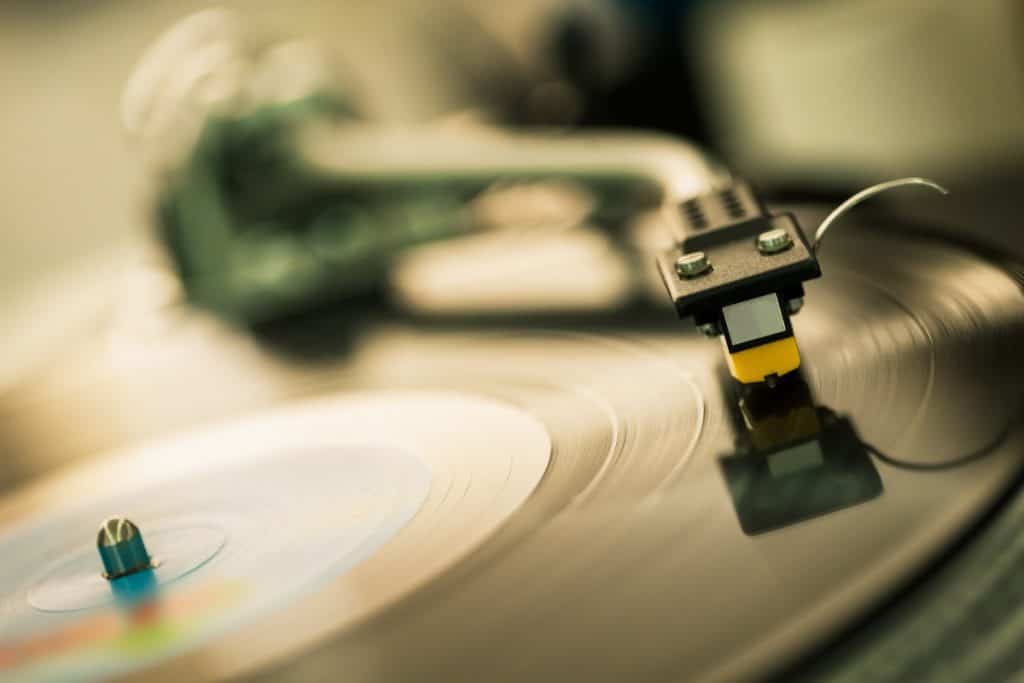
Size of Records You Want to Play
Not all vinyl records are the same. There are three different possible sizes of records. This is important to know because not all record players can play all sizes of records.
The different sizes are 12-inch diameter records, 10-inch diameter records, and 12-inch diameter records. The 10-inch size is the least common size, typically the records you will see will be 12-inch or 7-inch records. All record players can play a 12-inch record and a 7-inch record. However, not all can play a 10-inch record. If you want to play a 10-inch record you will need to make sure that the record player or turntable that you are buying is capable of playing a record of that size.
One thing that size can affect is how fast your record player should be going. The speed of a record player is determined by RPMs or rotations per minute. There are three different possible speeds, 33 1/3 RMs, 45 RPMs, and 78 RPMs.
Normally, your records should say what speed they should be played at. Typically 12-inch records should be played at 33 1/3 RPMs, 10-inch records should be played at 78 RPMs, and 7-inch records should be played at 45 RPMs. However, the speed can vary depending on the specific record. Playing a record at the wrong speed will not cause any lasting damage to it, but the song will not sound the way it is supposed to.
The final thing that size affects is how much music it contains. Records that have a 7-inch diameter will only last for about 5 minutes for each side while 10-inch records will last about 8 minutes per side. Finally, 12-inch records will last about 22 minutes for each side.
Long Term Care
The last thing you need to know about record players and turntables is how to clean them. Cleaning your record player is critical. If you ignore cleaning your record player, then it will end up hurting your player and your records. Dirt and dust builds up over time and can cause many problems. It can interfere with the playing of the music and ends up scratching your records and causing permanent damage to the vinyl. A little cleaning every time you use your record player can save you a lot in the long run.
First, you should dust your record player every time you use it with a lint-free or microfiber cloth. However, if you only use your record player every now and then, you should try to dust it twice a week. If you need a bit of a deeper clean, use rubbing alcohol on the microfiber cloth before you dust. If you do use rubbing alcohol, go over the player again with a dry microfiber cloth to remove any excess moisture.
Another thing you need to take care of is the stylus. There are special brushes for cleaning stylus, but if you don’t have them a fin small paintbrush would work. You should wipe the stylus with this brush every time you use your record player. If you want a more in-depth cleaning, use rubbing alcohol. Be very careful as you clean the stylus. It is very fragile and can bend easily. (Source)
One good way to make cleaning your record player easier is to use a dust cover between uses. Some record players have dust covers built into them. Some dust covers are plastic while others are cloth. Using a dust cover will limit the amount of dust and dirt that will accumulate on your player. Dust covers aren’t perfect and dust will still get on your record player, but it will make cleaning a lot easier. You can also just use a cloth if you don’t have a dust cover. (Source)
Now that you know these important things, you’re ready to enjoy your record player.
VacationVinyl.com is a participant in the Amazon Services LLC Associates Program, an affiliate advertising program designed to provide a means for sites to earn advertising fees by advertising and linking to Amazon.com. We also participate in other affiliate programs which compensate us for referring traffic.

